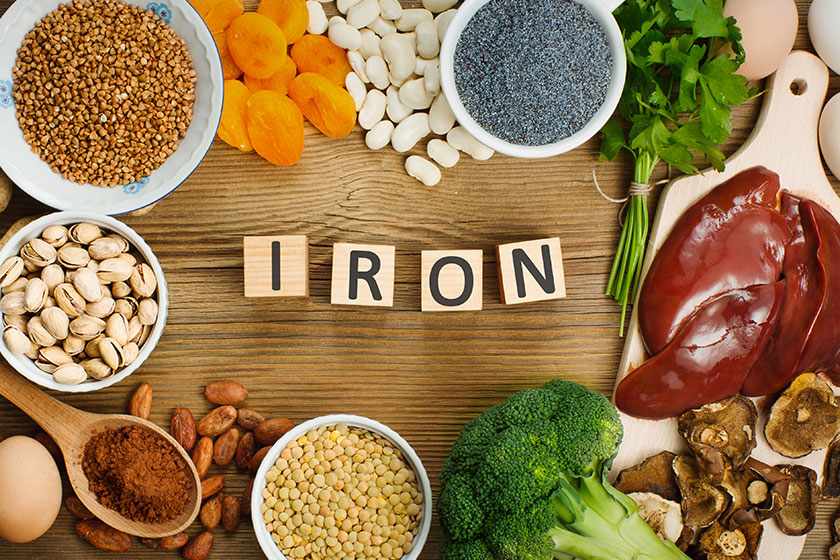Ensuring that loved ones get enough iron in their diet is crucial for maintaining their health and well-being. Iron-rich foods for elderly help prevent anemia and keep energy levels high. Choosing the right iron-rich foods can make a significant difference in your family members’ quality of life, providing key nutrients to support their daily activities and health.
Spinach and Leafy Greens for Plant-Based Iron Sources
Spinach and other leafy greens are excellent sources of non-heme iron, which is the type of iron found in plant-based foods. Including these in meals can help elderly individuals increase their iron intake naturally. Spinach, kale and Swiss chard are not only rich in iron but also provide essential vitamins and minerals.
These greens are versatile and can be easily added to salads, soups or smoothies, making them a convenient choice for daily meals. For better iron absorption, it is beneficial to pair them with foods rich in vitamin C. Including a variety of leafy greens in the diet can promote a balanced intake of nutrients.
Red Meat and Liver for High Iron Content
Red meat, such as beef and organ meats like liver, are among the richest sources of heme iron, which is more readily absorbed by the body. These foods can be especially beneficial for elderly individuals who are at risk of iron deficiency. Incorporating lean cuts of red meat into meals ensures a high intake of bioavailable iron.
The liver is particularly nutrient-dense and provides a significant amount of iron, making it a valuable addition to the diet. Preparing these foods in healthy ways, such as grilling or baking, can help maintain their nutritional benefits while reducing unnecessary fat intake.
Lentils and Beans to Boost Iron Levels in Diets
Lentils and beans are excellent sources of non-heme iron, making them a great option for increasing iron intake, especially for those who prefer plant-based foods. They are also high in fiber, which can aid digestion and help maintain healthy cholesterol levels. Including a variety of beans, such as black beans, chickpeas and lentils, can diversify the diet.
These legumes can be added to soups, stews or salads, providing a versatile and nutritious option for meals. They also pair well with other vegetables and grains, making them an easy addition to a balanced diet.
Iron-Rich Seafood like Oysters and Shellfish in Meals
Oysters, clams and other shellfish are excellent sources of heme iron, which is highly absorbable and beneficial for maintaining healthy iron levels. These seafood options are not only rich in iron but also provide important nutrients like omega-3 fatty acids and vitamins. Including them in meals can promote cardiovascular health and overall wellness.
Seafood can be enjoyed in various ways, such as in salads, pasta dishes or as a main course. Ensuring that elderly individuals have access to these nutritious options can help them maintain a healthy and balanced diet.
Iron-Fortified Cereals and Whole Grains for Daily Iron Intake
Iron-fortified cereals and whole grains are practical options for increasing iron intake, particularly for breakfast. These foods are often enriched with additional nutrients, making them a convenient and nutrient-dense choice for daily meals. Whole grains like oatmeal and quinoa are also high in fiber and can aid in digestion.
Including these fortified options in the diet can help ensure that elderly individuals meet their daily iron needs without having to make significant changes to their eating habits. These foods can be enjoyed with fruits and dairy for a balanced meal.
Nuts and Seeds as Convenient Iron-Rich Snacks
Nuts and seeds are not only rich in iron but also provide healthy fats, proteins and other essential nutrients. Almonds, cashews and pumpkin seeds are great choices for convenient and nutritious snacks that can help boost iron levels. They are easy to incorporate into various meals or to enjoy on their own.
These snacks are ideal for elderly individuals who need quick and healthy options to maintain their energy levels throughout the day. Including a variety of nuts and seeds in the diet can support wellness.
Iron Absorption with Foods Rich in Vitamin C
To enhance iron absorption, it is beneficial to pair iron-rich foods with those high in vitamin C. Citrus fruits, berries and bell peppers are excellent choices that can help improve the body’s ability to absorb non-heme iron from plant-based sources. Including these foods in meals can significantly increase iron intake.
Ensuring that elderly individuals consume a balanced diet that includes both iron-rich foods and vitamin C-rich foods can help maintain healthy iron levels.
Nutritious Meals for a Healthier Retirement Community Experience
At our community, we offer senior living options designed to promote health and wellness. Our meals feature a variety of iron-rich foods for elderly, ensuring our residents receive the nutrients they need to thrive. We also emphasize the importance of Sensational Dining experiences that cater to diverse dietary needs and preferences. Our team at is committed to providing a nurturing environment that supports the well-being of all our residents.







